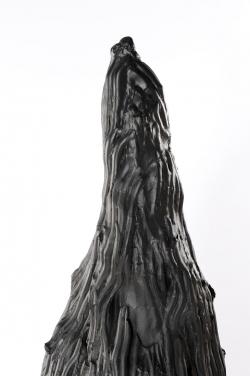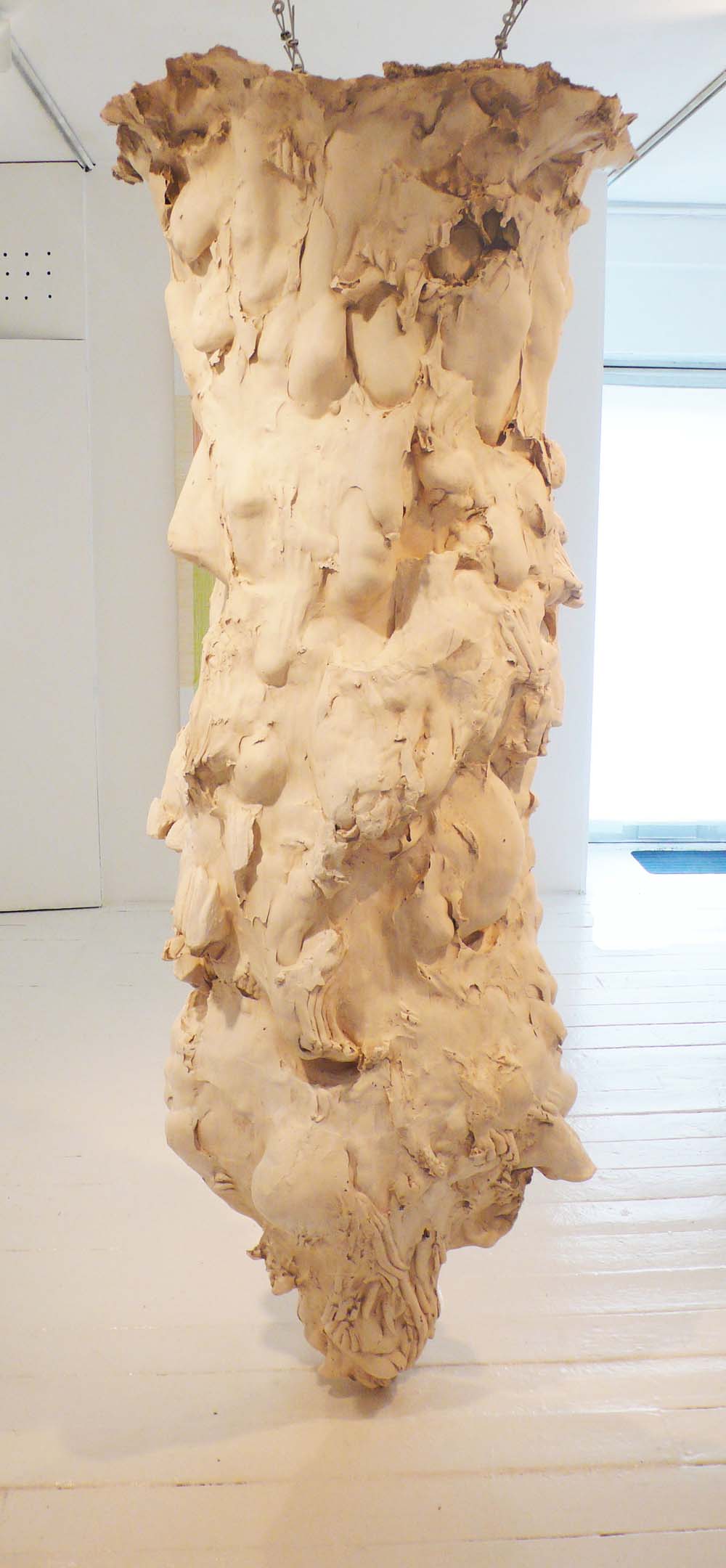
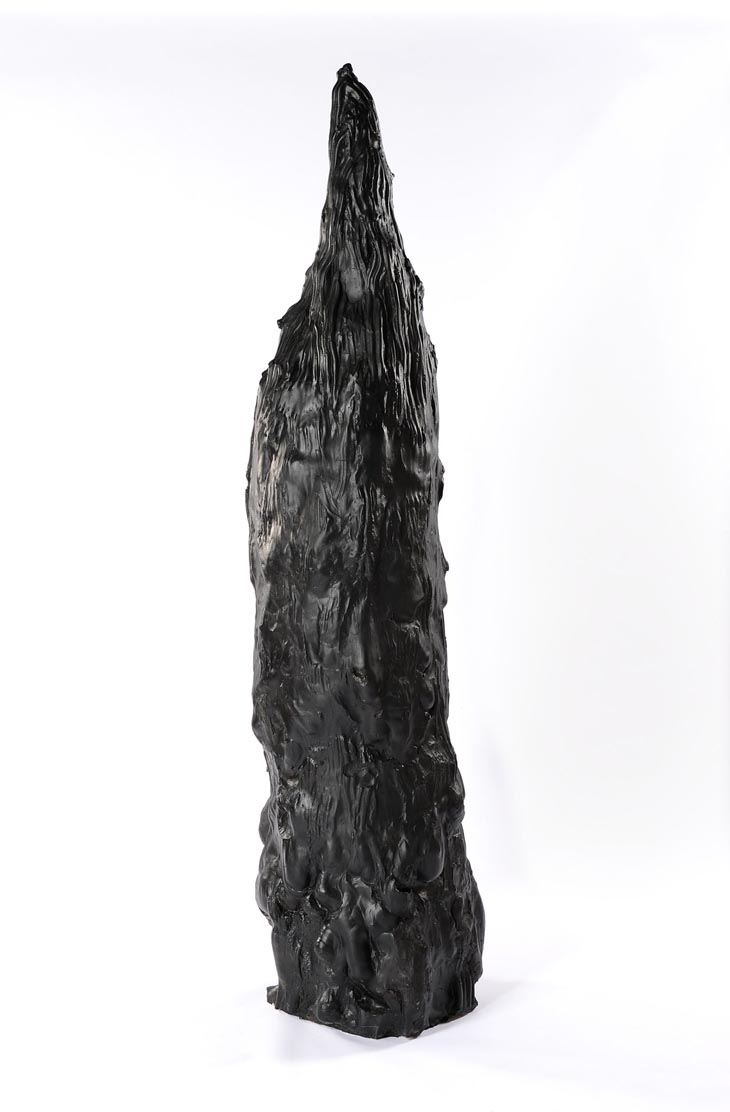
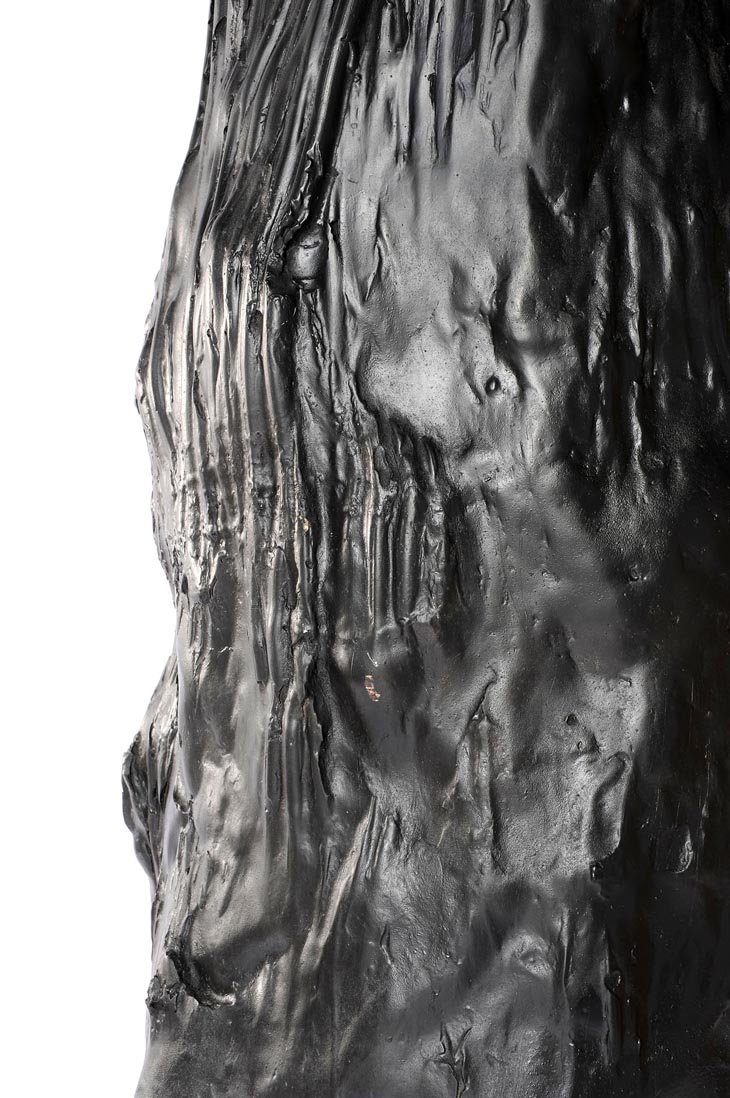


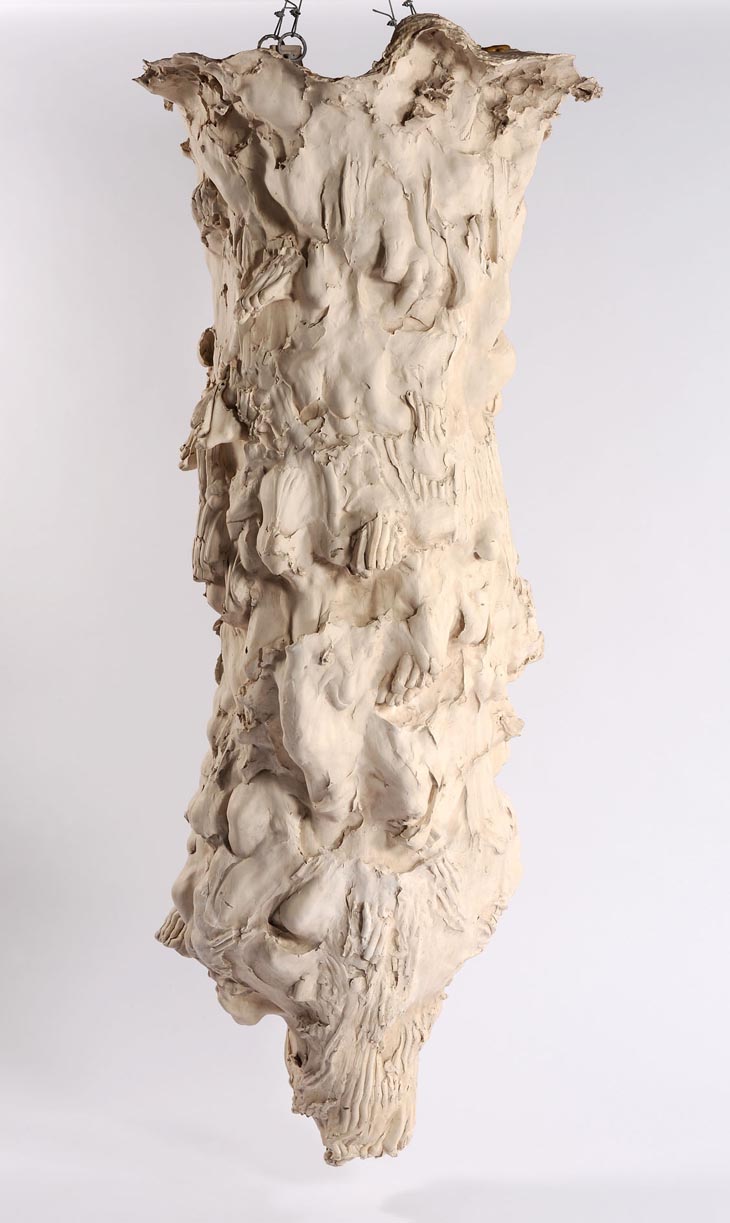
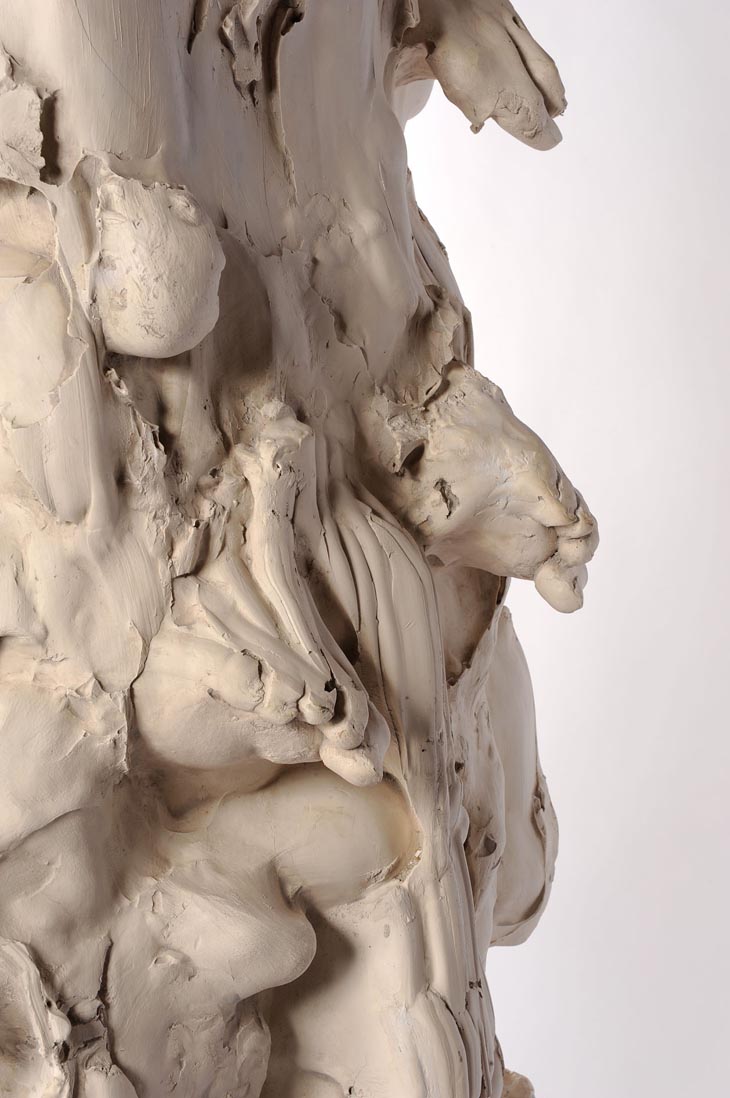
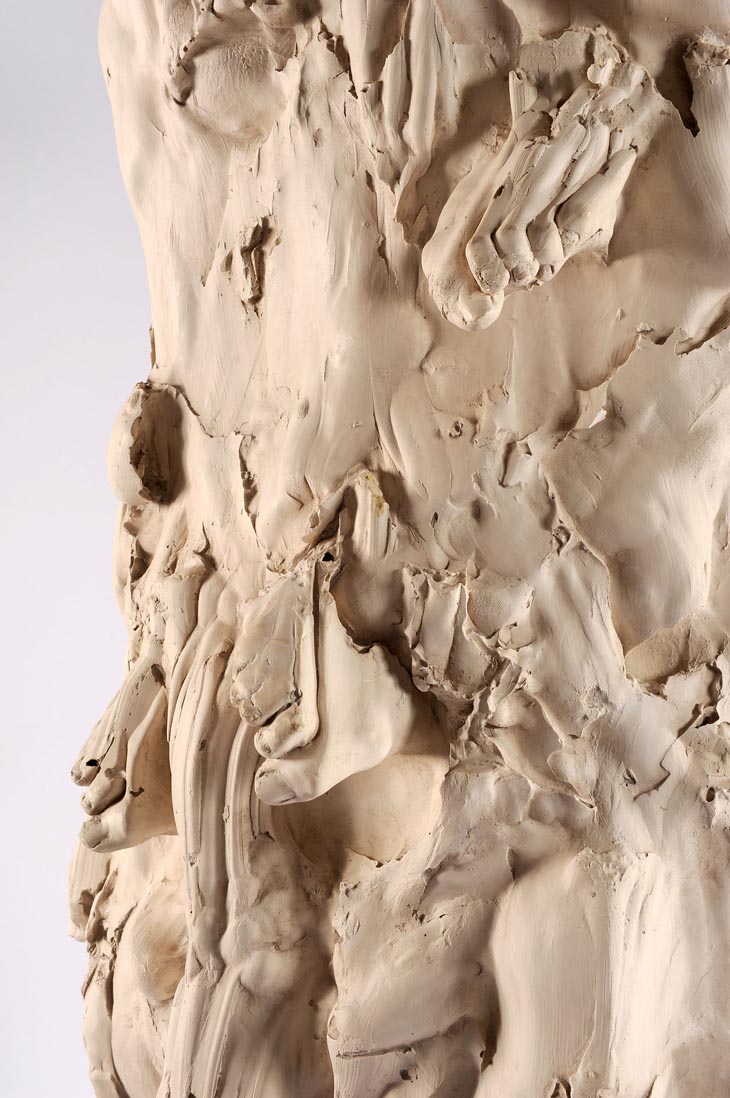
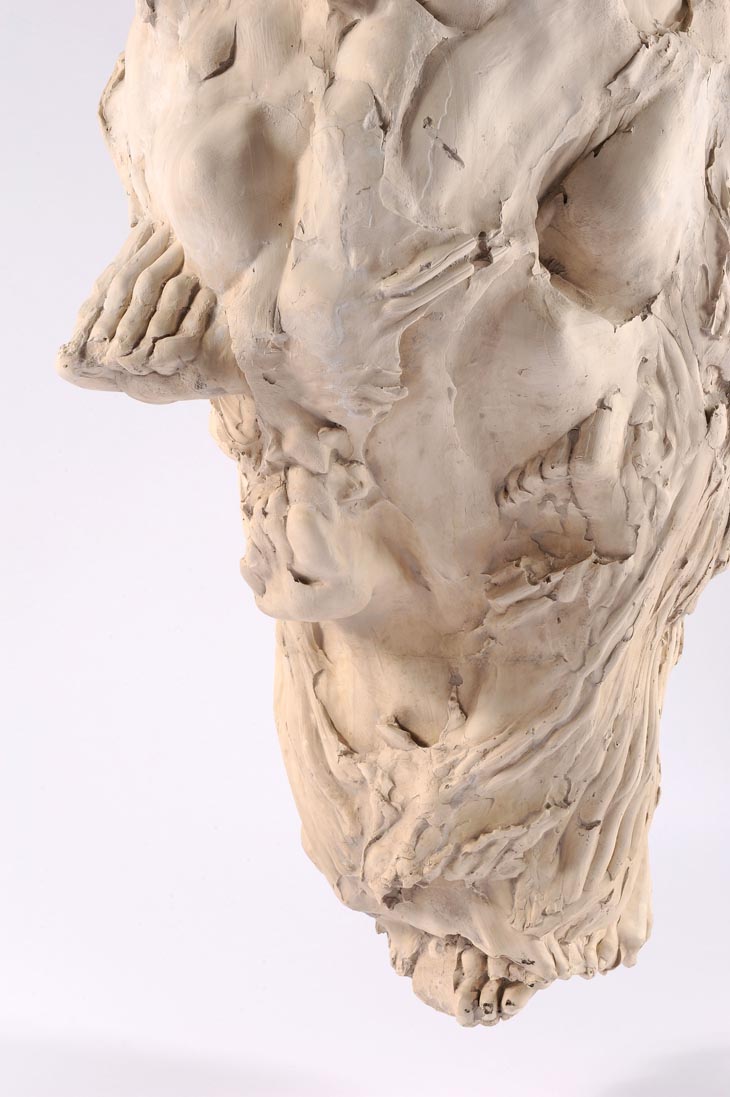
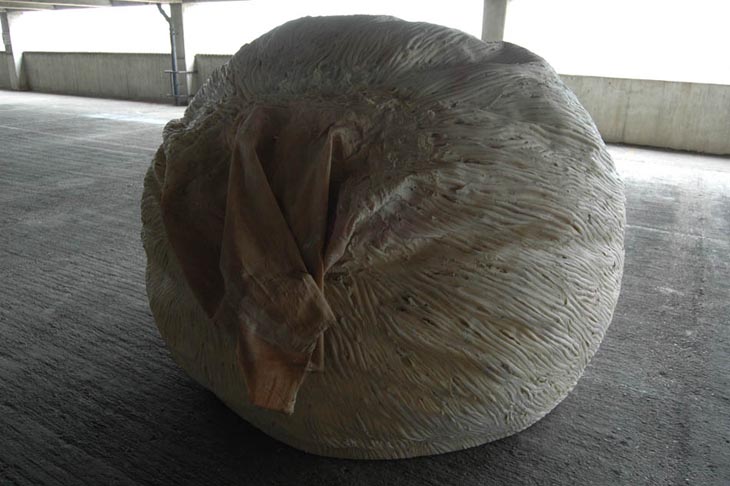
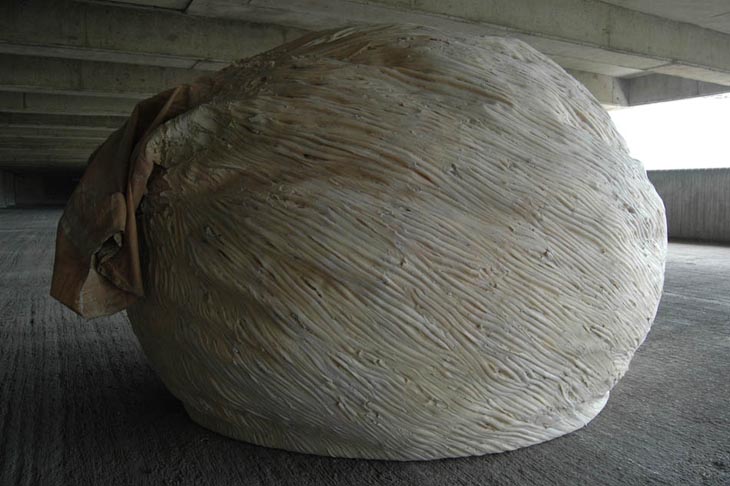
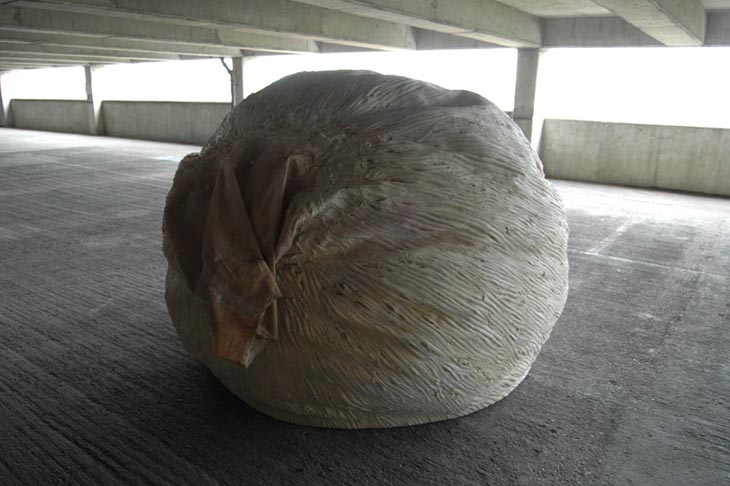
Juliana Cerqueira Leite
“My work is driven by an investigation into physicality and how we interact with the physical world,” says Juliana Cerqueira Leite. “For Up, I built a box that was as tall as I could reach, slightly larger than my body, and completely filled it with clay. The box was raised onto a steel platform so I could crawl under it. I dug upwards through the clay until my entire body fit inside the box and I could reach its top with my arms stretched above my head. The final piece is a plaster cast taken from the space I dug out and shows the minimum amount of space I could occupy. The wavy surface is formed by the negative grooves from the tips of my fingers pulling the clay downwards and pushing it out of the bottom of the box. The work is black because when I was inside the clay it was completely dark. I couldn’t see anything so this piece was made entirely by touch.”
“The process shows me something about my body or form and the end result is always a surprise. For Down, I used the same sized box and amount of clay as in Up, but dug downwards from the top. I don’t really plan how I’ll carry out the tasks that I set myself and I thought I might dig like a dog, but discovered my body doesn’t work like that: I had to sit in the hole I was making and scoop around myself, lowering myself feet first into this space. As I got deeper I found myself using rock climbing techniques to suspend myself inside the clay. The spiral formation emerged through the subconscious movement of working in a circular way. You can see all the impressions of my knees, feet, and elbows. I cast this form in plaster, it’s one of the most readily available materials, historically so linked to sculpture and it’s important to me that it’s organic and non-toxic. The object isn’t solid but still very heavy; it’s installed as if it defies gravity.”
“I like thinking about physics: what would our bodies look like if time didn’t separate our actions? I started Oh by standing in front of a wall with pencils in my hands and traced the area all around me as far as I could reach without moving my feet. The diameter of what you can touch around yourself is surprisingly spherical. I wanted to make an object that would materialise that space. I made an 8x8’ octagonal room with a small hole at the top that I could enter through and layered the inside with 2 tons of clay that I pushed and dragged away from myself until it recreated that sphere of reach. I then painted the interior with latex to cast the ‘balloon’. I tried inflating it, but it’s too heavy to hold air and I like the form as a sculptural object in itself. It’s like an entity or an organic mass and becomes warped by the weight of itself. I see it as a volume defined by the potential of touch.”



